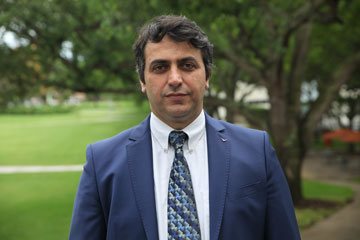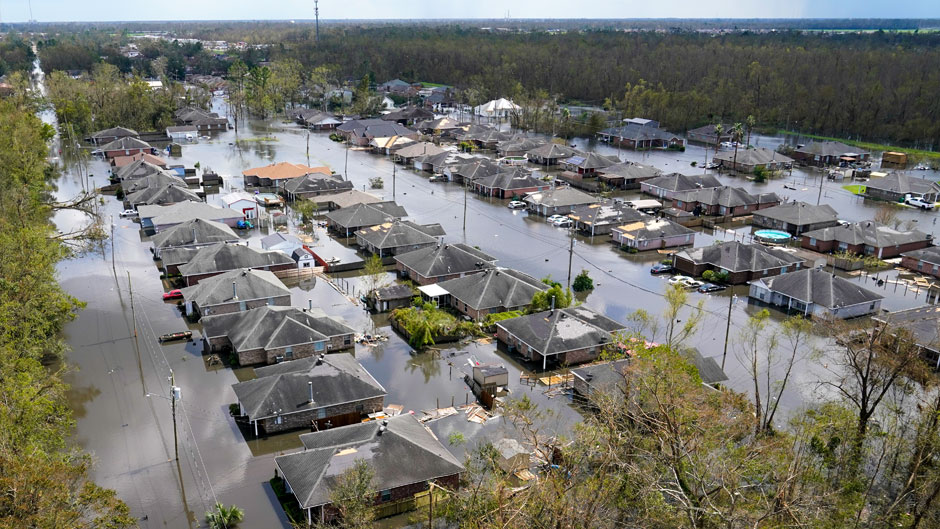Consider it a glimpse of the future, a crystal ball view of what supply chain networks and the delivery of goods and services in Gulf Coast communities will look like should sea level rise continue unabated in the region.
Last summer, hundreds of thousands of people were left without power when Hurricane Ida took out more than 2,000 miles of transmission lines in Louisiana and Mississippi. The Category 4 storm also shut down roads and ports in the region, affecting the ability of responders to render aid and disrupting the availability of everything from food and gas to electronics.
Indeed, hurricanes demonstrate without a shred of ambiguity the disorder several feet of water can cause over a short period of time.
Sea level rise unchecked would have long-term, if not permanent, catastrophic impacts, decimating urban and rural communities in the Gulf of Mexico coastal region that are already among the most susceptible to the effects of rising seas.
Now, a University of Miami researcher is leading an initiative that has the potential to help those communities respond to and mitigate what is arguably the biggest challenge of the climate emergency.

“Our goal is to apply principles of systems engineering, such as coordination and integration, to the problem,” said Murat Erkoc, associate professor of industrial and systems engineering in the University of Miami College of Engineering and principal investigator of the project.
“Urban and rural areas along the Gulf are part of a geographical continuum composed of interdependent nodes connected by synergistic linkages, wherein the urban areas depend on the rural areas for natural resources and the rural areas depend on the urban areas for services,” he explained. “While the nodes are each unique in their socioeconomic and environmental context, they are linked by transportation networks, waterborne commerce, oil and gas pipelines, ecosystem-based natural infrastructure, human migration routes, culture, and technology. Sea level rise threatens those links.”
His National Science Foundation-funded project will help those areas maintain connections, employing strategies ranging from sea walls and managed retreat to adaptation.
“Preparing for the risks of sea level rise is a challenge that connects communities throughout the Gulf, from small towns to big cities,” said co-principal investigator Katharine Mach, an associate professor of environmental policy in the University’s Rosenstiel School of Marine and Atmospheric Science. “We want to create crucial interactions across disciplines and communities—and between the present and the future of sea level rise adaptation.”
Researchers from Florida Atlantic University, Louisiana State University, and Texas A&M University are collaborating with Erkoc and Mach.
Gulf coast communities in Alabama, Florida, Louisiana, Mississippi, and Texas are among the most vulnerable to rising seas. While a recent Virginia Institute of Marine Science study reported that the rate of sea level rise along much of the U.S. coastline continues to accelerate, the highest rates have been recorded along the Gulf of Mexico, with one location, Grand Isle, Louisiana, experiencing a nearly 8-millimeter rise per year.
“We looked at the literature, asking ourselves what techniques and approaches were being used to address this important challenge,” Erkoc said. “And what we found was that while the majority of work has been dedicated to predictive models of sea level rise, others that offer solutions have been narrow in scope, focusing on a particular aspect of the problem.”
Through online and in-person charrettes and workshops, and with community members playing active roles in the process, Erkoc’s group will work toward building capacity for a convergent research network that will help stakeholders and policymakers respond to the crisis in coordination with one another.
“One solution, especially if it’s proposed separately, will not work well for all parties involved,” Erkoc noted. “For example, hard protection like seawalls can reduce the immediate impact of sea level rise, but they can inadvertently put a barrier between communities and other parts of nature. A mix of measures is needed.”
Assisting disadvantaged neighborhoods within Gulf Coast communities will be a major component of the project. “These enclaves compose a large fraction of both the urban and rural population in this region, yielding a high degree of social vulnerability,” Erkoc explained. “The three most typical sea level rise response strategies—protection, accommodation, and retreat—are often practiced differentially across urban versus rural areas. Existing climate adaptation plans indicate that urban areas are more likely to establish protection strategies while rural areas are more likely to ignore the issue altogether or consider abandonment rather than conducting comprehensive, collaborative, and robust planning.”
He added that relationships formed by the different entities will help sustain research and engagement beyond the project.

